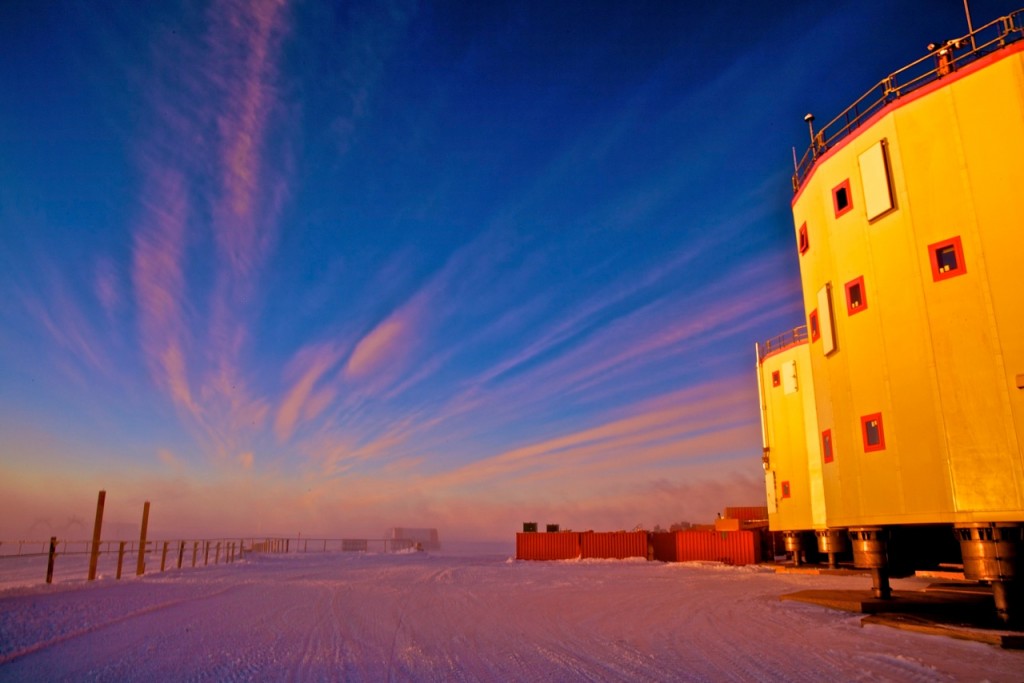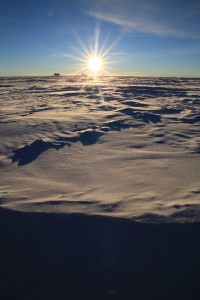Concordia is a joint French-Italian inland Antarctic research station run by the French Polar Institute and Italian Antarctic Programme. Every year it hosts a human research protocol coordinated by ESA and Concordia partners, supplied by universities and research institutions from across Europe.
As well as offering around 9 months of complete isolation, Concordia is located at around 3200 metres altitude, so the crew has to adapt to chronic hypobaric hypoxia – they live with a third less oxygen than is available at sea level.
During the Antarctic winter, the crew endures 4 months of complete darkness: the sun disappears from the beginning of May, and is not seen again until late August.
Living in isolation with a European crew of 13 and in the world’s most extreme environment creates an ideal opportunity to conduct research into the adaptation of human psychology and physiology.
Space research has been conducted in the polar regions for many years – offering conditions on Earth similar to long-term space travel.






Discussion: 13 comments
Dear Dr.Kumar,
I would like t o have the names ane email adresses of the winterover team in Concordia in order to communicate with them personally.
Thanks in advance for your assistance.
Best regards.
Nabi Suray
We all hope you to have a nice Antarctic winter. Take care the Greek guy on your base.
Cheers!
Many thanks for keeping us posted on activities at Concordia Station.
Just to note that ESA Earth Observation also has a healthy list of activities ongoing at the Concordia Base. This summer we had extensive flights to collect gravity and L-band radiometer data in support of the ESA GOCE and SMOS Earth Explorer missions.
Meanwhile, we have an L-band tower mounted radiometer that is providing year-round operational measurements in support of the calibration monitoring for our Earth Explorer mission SMOS. See also: https://blogs.esa.int/campaignearth/2012/12/19/scientists-brave-the-elements-to-support-esas-water-mission/
Take care of yourselves over the winter months!
How long does a journey take from New Zeland to the base, when joining to or signing off?
Interesting.
I was on the Crew of the USCGC Burton Island on Deep Freeze 76. We went to MC Murdo Sound station. We were restricted to the ship after a brawl broke out at the Stations one and only Bar after a few drinks. Some people let the
isolation get to them. Add in a few whiskey shots and 🙂 The space to moor our ship was limited so we had to we had to moor along side an Argentine Ice Breaker that was also stopping over letting off supplies and scientist. They actually had a few women and a dog on their vessel. And Wine!! Mediterranean mooring required that we cross through their ship to get to the ladder leading to the ground. The few days their were there was very interesting to say the least. My ship stayed there for several months. We almost had to winter over due to getting stuck in the ice flows. But we blasted out with dynamite. We were the first vessel to reach Pine Island Bay and we set up a weather station hut on the island.
Hey hi there keep up with the good work again i am eager to join the team okay thanks.
Greetings,
Are there any other requirements such as years spent working in clinical practice or one can apply straight after graduating from medical school?
Experience is required, but there is no strict minimum, apply!
Thank you for your reply. Is there any availible information on how high is the salary for medical doctor?
Please check with IPEV as they place the contract with the medical doctor. The salary is lower in the preparatory months, but goes up significantly once on-site at Concordia.
What other kind of people can go to Concordia besides from medical doctors? And when do they usually apply?
It takes a small village to run Concordia station, other professions include plumbers, electricians, a chef and more. Apply via the station owners the French Polar Institute (Institute Paul Emile Victor, IPEV) and the Italian Antarctic Programme (Programma Nazionale di Ricerche in Antartide, PNRA.